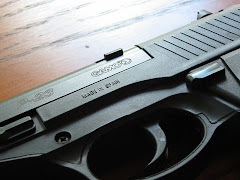I also read a posting on another blog the other day, where an individual had described a great deal of twang in a rifle he just purchased and was told to keep returning it to the retailed until he got on that shot smoothly as it was generally known to be a smooth shooting rifle.
I happened to own one of the rifles in question and had always found mine to be remarkably smooth firing, so I tended to agree with the advice given.
A few days later, I got my own rifle out to shoot after it had been in storage for the winter and I noticed it had developed an incredible twang. The rifle had been stored standing barrel up with the action slightly open. And it had been stored in an area that gets pretty warm.
What happened to my rifle? Well about a year ago I had a similar experience with a springer that was stored in the trunk of a car for several days during the summer. As a result of the two experiences, I've come to develop the following theory.
AJ's Theory:
When some spring piston airguns are stored in certain positions and exposed to heat for a protracted period, the grease which lubricates the spring and piston is migrating away from it's intended area and pooling up somewhere. The result is an under lubricated spring and piston which is producing the increased vibration and twang. To test the theory on this rifle. I moved it to another location (although still very warm) and stood it on it's barrel (action closed, butt in the air) for about 72 hours. What do you know? Now it shoots as smoothly as it did a year ago.
If this theory about the spring lubricant migrating during storage is accurate, the next question becomes how should they be stored.
In an ideal world all airguns would be stored in a cool and dry environment. Unfortunately that does not always happen. Manufacturers, distributors, retailers and frequently the owners are sometimes forced to store them in areas that are warmer than we would like. Also, many of the commercial groups are storing large quantities (sometimes boat loads) and tend to store rifles on one side for months on end. I've truly come to believe that this is part of the explanation for variance in some "stock" rifles.
Without any real knowledge coming from the manufactures, it is my guess, that a springer which is stored horizontally in a shooting orientation (sites on top, trigger on the bottom) will be less likely to be effected by this phenomena (if that is really what's going on here.)
Please feel free to post your thoughts on the matter.
Until next time...


No comments:
Post a Comment